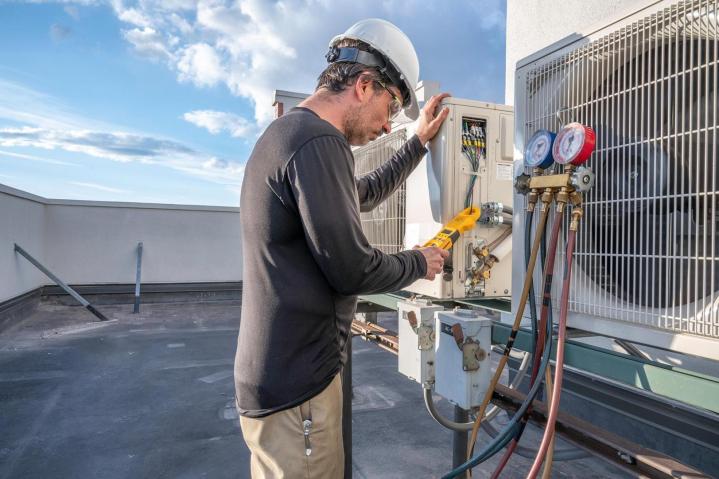What Are the Main Part of HVAC System?, South Western Ontario

Stay comfortable year-round with Costa Mechanical's expert HVAC installations. Contact us today for your heating and cooling needs!
Expert HVAC Installations near South Western Ontario: What Are the Main Part of HVAC System?
The main parts of an HVAC system can vary depending on the type and configuration of the system. However, most HVAC systems consist of the following key components:
Furnace/Heating Unit: This component is responsible for generating heat to warm the air. It can be powered by natural gas, oil, electricity, or other fuel sources. The furnace heats the air and then distributes it throughout the building.
Air Conditioner/Cooling Unit: The air conditioner or cooling unit cools the indoor air during warm seasons. It typically includes a compressor, condenser coil, and evaporator coil to remove heat from the air and release it outdoors.
Heat Pump: Heat pumps are versatile components that can provide both heating and cooling. They use refrigeration cycles to transfer heat between the indoors and outdoors, depending on whether heating or cooling is required.
Evaporator Coil: The evaporator coil is part of the cooling system. It absorbs heat from the indoor air as refrigerant evaporates within the coil. The cooled air is then distributed throughout the building.
Condenser Coil: The condenser coil is located in the outdoor unit of the system and is responsible for releasing heat absorbed from the indoor air to the outdoors. It facilitates the cooling process by dissipating heat.
Compressor: The compressor is a crucial component that compresses the refrigerant gas, increasing its pressure and temperature. It plays a vital role in circulating and transferring heat within the HVAC system.
Air Handler: The air handler is responsible for moving and circulating conditioned air throughout the building. It typically includes a blower, fan, and filter, and may be integrated with the furnace, cooling unit, or both.
Ductwork: Ductwork refers to the network of channels or pipes that distribute conditioned air throughout the building. It carries the heated or cooled air from the HVAC unit to different rooms or zones.
Thermostat: The thermostat serves as the control center of the HVAC system. It allows users to set the desired temperature, control system modes (heating or cooling), and schedule operations. Advanced thermostats may also offer programmable or smart features for increased energy efficiency and convenience.
Ventilation System: The ventilation system ensures the supply of fresh air and the removal of stale air from the building. It may include intake vents, exhaust vents, fans, and air filters to maintain indoor air quality.
These are the main components commonly found in HVAC systems. However, it's important to note that different system types, such as split systems, packaged systems, or ductless mini-splits, may have variations or additional components to meet specific heating, cooling, and ventilation requirements.
Expert HVAC Installations near South Western Ontario: How Do HVACs Work?
HVAC systems work by controlling the temperature, humidity, and air quality of a space to provide thermal comfort. The general operation of an HVAC system involves the following steps:
Thermostat detects the temperature: The HVAC system is controlled by a thermostat, which monitors the temperature of the indoor space. When the temperature deviates from the set point, it signals the system to adjust accordingly.
Air intake: The system draws in air from the surroundings through return vents or ducts, depending on the configuration.
Air filtration: The incoming air passes through air filters to remove dust, particles, and pollutants, improving the indoor air quality.
Conditioning the air (Heating or Cooling):
In heating mode, the system uses a furnace, heat pump, or other heating units to warm the air. The heating source generates heat, which is then transferred to the air or water, depending on the system type.
In cooling mode, an air conditioner or heat pump removes heat from the indoor air. The refrigerant circulating in the system absorbs heat from the air, which is then released outside through the condenser coil.
Air distribution: The conditioned air is pushed or pulled by a blower or fan through the ductwork. The ductwork distributes the air to different rooms or zones in the building, ensuring even airflow.
Ventilation: The HVAC system may incorporate ventilation components to introduce fresh outdoor air into the space. Ventilation systems can help control humidity, remove odors, and improve indoor air quality.
Air return: After the conditioned air has circulated through the space, it returns to the system through the return vents or ducts.
Air recirculation and temperature control: The process of air intake, conditioning, and distribution continues as needed to maintain the desired temperature and comfort level in the space.
Repeat cycle: The HVAC system cycles on and off to maintain the set temperature. The thermostat continuously monitors the temperature and activates the system as needed to maintain the desired conditions.
Throughout this process, the HVAC system's various components, such as the compressor, evaporator coil, condenser coil, fans, and motors, work together to provide heating, cooling, and ventilation. The system's operation depends on the specific type and configuration of the HVAC system being used.

